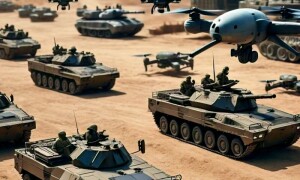LAHORE: A proposal on the installation of a wastewater treatment plant at Hadiara drain is being ignored either due to non-Wasa area, lack of funds or disinterest on the part of the government.
A recent feasibility study, which was jointly conducted by LDA and the Wasa through a private consultancy firm, also avoided analysing the Hadiara drain—the city’s largest drain—after the company learnt it didn’t fall in the service area of Wasa.
The study report have, however, recommended seven plants at Ring Road-North East-1 and 2 (Mehmood Booti Disposal Station, Shalimar Escape Channel, Khokhar Road and Shadbagh), Shahdara-North West-1 (near Jahangir Tomb), Outside Tarragarh Settlement-North West-2 (Farkahabad), Lower Chota Ravi Drain/Bhati gate/Main Outfall-Central-1 (near Saggian Bypass over Ravi), Gulshan-i-Ravi-Central-2 (outside Gulshan-i-Ravi, near Motorway, Bund Road exit) and Main Road Cantonment Drain-South East (outside Shadiwal).
According to sources, the project to install a-state-of-the art plant at Hadiara is important because the drain flows with average capacity of 800 to 100 cusecs industrial wastewater in dry and 3,000 to 4,000 cusecs during wet weather.
Area doesn’t fall in jurisdiction of Wasa which also lacks funds
“Hadiara drain is different from other ones. Other city drains carry and discharge domestic and storm wastewater in Ravi, while Hadiara flows with a very dangerous industrial waste carrying chemicals, metals etc. The water flowing in Hadiara is discharged by hundreds of factories and some of the residential localities, causing various medical problems to the public at large such as skin allergy, cancer, asthma etc,” an official explained while talking to Dawn.
According to study report, the existing wastewater collection system of Lahore is a semi-combined system consisting of the primary, secondary and tertiary network. Wasa is also responsible for maintenance of Lahore’s water supply system and storm water drainage system. Both secondary sewers and storm water drains carry wastewater flows either directly to the Ravi or to the disposal stations. These disposal stations discharge wastewater flows to either the Ravi or to the primary drains that end up in the Ravi.
“In Wasa service area of Lahore, there are 12 disposal stations, four drainage pumping stations and 91 lifting stations.
While the disposal stations operate throughout the year, the drainage pumping stations are intended to operate only during the monsoon period, i.e. to pump only the generated storm water flows. However, a number of sewer pipelines are connected to the storm water drains and, as a consequence, the drainage pumping stations are presently utilised as disposal stations during the wet weather periods,” the study reads.
It says the catchment area of the entire disposal stations is about 350km.
While discussing Hadiara, the study says the LMP Block and Nishtar Colony disposal stations are discharging to Hadiara drain, which is out of the scope of this study. “Therefore, these two disposal stations and Wasa sub-catchment areas (South area and South-East area) have not been considered in this study. There is already a proposal in process to install a wastewater treatment plant on Hadiara drian as a separate project; LMP and Nishtar Colony will be covered accordingly,” it mentions.
The official, who requested anonymity said the estimated cost of the seven plants being planned to be installed for domestic and storm wastewater treatment, was about Rs42 billion, while the plant alone at Hadiara, which flows with the industrial as well as storm wastewater, would cost over Rs20bn.
“I think this is the main problem, as the government lacks funds for this mega project,” the official said.
When contacted, Wasa Deputy Managing Director (Engineering) Aftab Ahmad said the government as well as Wasa were well aware of the project under which a mega treatment plant is to be installed at a spot on the Ravi for Hadiara.
“This project exists in the city’s master plan, but at present there is no working on it,” he said, adding the project would surely be implemented as soon as funds are made available for it.
He believed that the government would surely execute the project.
Published in Dawn, May 24th, 2016











































